IN 1930 the Museum purchased from Paris the delicately painted pyxis of Figure 1. The buff clay of which it is made is imperfectly fired and ill-adapted to withstand the erosion and detrition to which it was subjected during the long period when it lay buried beneath the ground. There are many breaks and several small gaps. The dark wash paint has also suffered from contact with the soil. The handle of the cover which was inserted through a neatly made central perforation is missing. Four perforations, the axes of which slant outwards, were cut through the bottom of the vase, for the insertion of feet. Mr. R.C. Bosanquet, in discussing somewhat similar pyxides from Palaikastro,1 has suggested that the handles of the lids were ‘loops of leather or buttons.’ Our pyxis would look more handsome with feet and handle to match, and it is probable that both were made of some hard material like wood or bone. There is no green stain to indicate bronze.
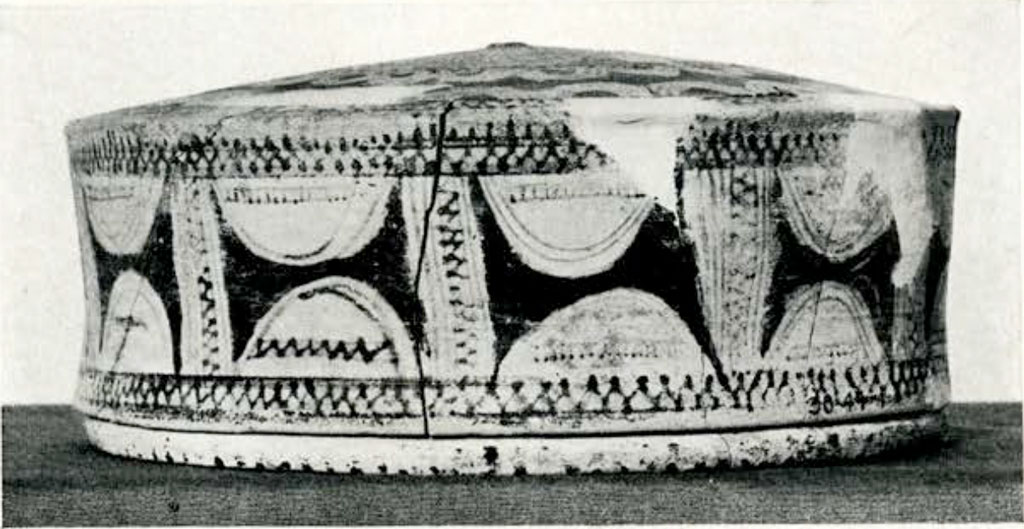
Museum Object Number: 30-44-1
Image Numbers: 2492-2497
The cover of the piece rests on a ledge at the base of the upright wall. In this respect the vase differs from the majority of contemporary pyxides, the covers of which are generally set on external ledges just below the rim, but earlier pyxides with covers of this type have been found at Phylakopi, Hissarlik, and the Cyclades.2
The artist spared no pains in painting this piece; the inside of both lid and vase were once covered with black wash paint; so, also, was the outer surface of the upright wall of the vase, down to the moulding on which the cover rested, which is emphasized by a row of upright lines. On the upper surface of the cover is painted a wealth of ornaments in close array. Around the central hole [Figure 2] is a ring of black which probably indicates the size of the knob; next is a zigzag running between concentric circles. This pattern, which is used many times on the vase, and lends a lace-like richness to the design, looks in some places today like rows of dots connected by zigzags, because the color of the circles which border the design is for the most part preserved only where the zigzag overlaps. The chief pattern on the lid is a scale pattern, painted carefully in a thin reddish-brown wash. Between other circular bands of zigzags are set rows of concentric loops facing one another, the intervening space filled with black. The shoulder of the cover is decorated with rows of parallel lines to match the ledge on which it rests. The decoration of the upright wall of the cover [Figure 1] is bordered above by zigzags and separated into panels by perpendicular rows of the same pattern. In each panel are concentric loops facing one another, the intermediate spaces which are again painted black, resembling the double axe or butterfly pattern. On the bottom of the vase [Figure 3] are concentric circles.
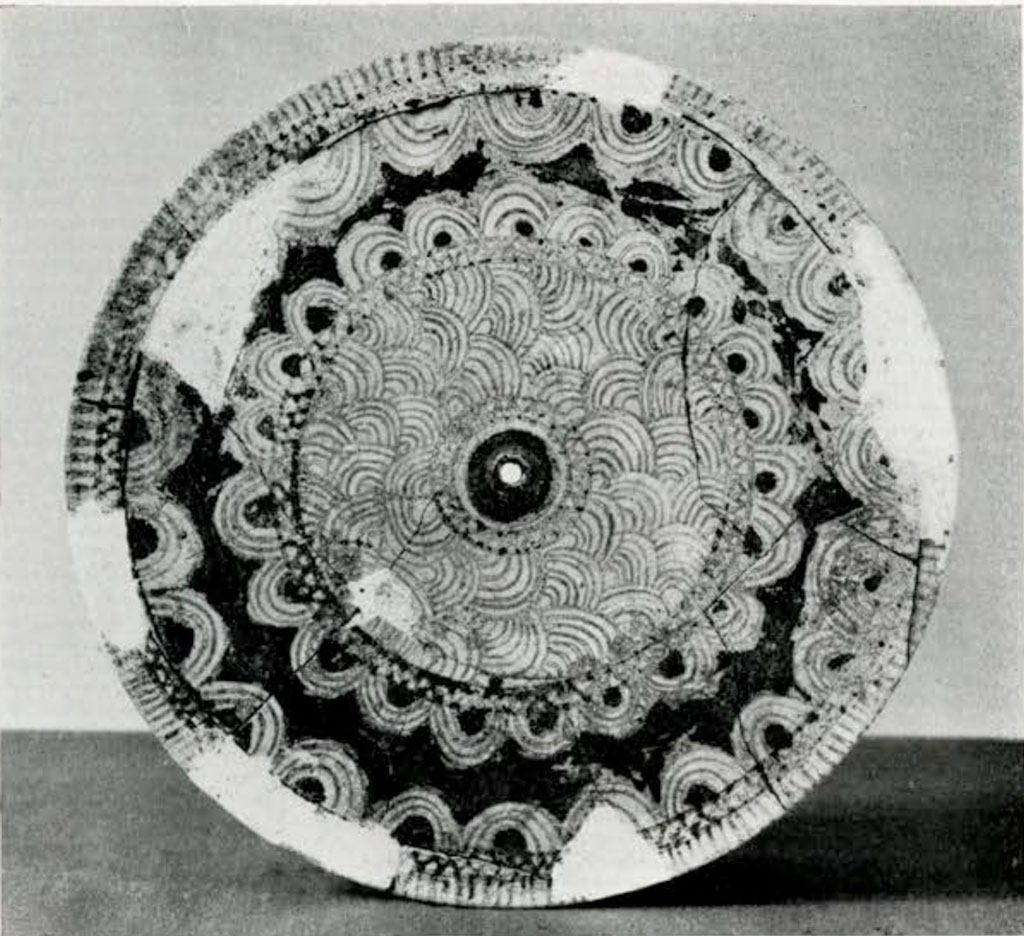
Museum Object Number: 30-44-1
Image Numbers: 2492-2497
The history of the pyxis reaches to a remote period of Mediterranean ceramic art. In Crete the form is found in early strata assigned to the early Minoan II period and bears traces of immediate descent from neolithic art.3 Outside Crete it is found in the Corinthia4 and, as we have seen, in the Cyclades and at Troy.
Pyxides of the early period are made of stone as well as of clay. The admirable lid from Mochlos, the handle of which is carved in the form of a couchant dog,5 probably belongs to a pyxis and dates from the Early Minoan II period. Frequent also in this as well as in the subsequent Middle Minoan I period is a type of small stone pyxis, the height of which exceeds its diameter. The Museum possesses such a pyxis, granted by the Cretan Government from the objects found by Seager in the Pseira houses [Figure 4]. These Cretan stone vases are generally held to have been made under Egyptian influence, but the wealth of stone vessels yielded by the excavations at Ur shows that in Mesopotamia as well as in Egypt the art of cutting vases from hard stone attained a high degree of excellence in the fourth and third milleniums B.C., and it is noteworthy that among the stone vases from Queen Shubad’s grave was found a ‘circular box with a lid,’ Probably the splendid stone vase, now in the University Museum, was provided with a flat lid.6 The smaller type of pyxis is known also in Mesopotamia. The lid of Figure 5 was found, as Dr. L. Legrain kindly informs me, in the basement of the E-nun-mah of the Ur palace. The incised circles with which it is ornamented correspond closely to those on the base of a steatite vase which was found near the lid and which bears the inscription of Naram-sin, King of Akkad in 2600 B.C.
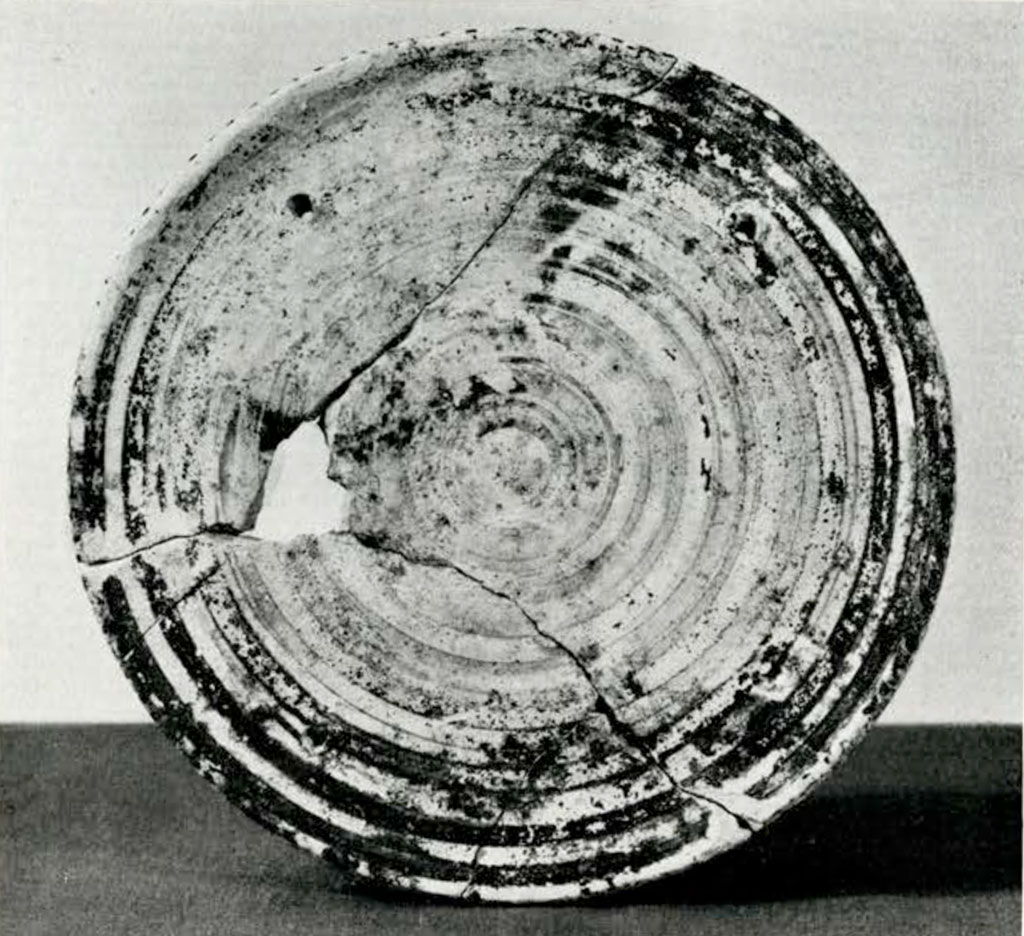
Museum Object Number: 30-44-1
Image Numbers: 2492-2497
During the period of Cretan supremacy, in the Middle Minoan III and Late Minoan I and II periods, the pyxis disappears, but at the end of the Bronze Age, it comes again into favor. The fact that a form of vase, common to Crete, the Cyclades, Corinthia and Hissarlik, not to mention Mesopotamia, disappears to reappear again at the end of the Bronze Age seems to invalidate the conclusions of A. Gotsmich7 that northern shapes and northern types of designs are suppressed during the period of the supremacy of Cretan naturalism, but recur so soon as Cretan art begins to wane. The revival of the pyxis form at the end of the Bronze Age may have been occasioned by the wide-spread use of ‘barrel pithoi.’8 With such vases as well as with the pyxides from Palaikastro our pyxis has much in common,9 both as regards the type of ornament used and the ‘close style’ of its application. Our vase, accordingly, is probably Cretan and belongs to the last phase of Minoan art, which is scarcely distinguishable from the early phases of proto-geometric art. The scale pattern, the concentric loops, the zigzag, are motives which recur in proto-geometric art, but the ornamentation is less closely applied than in designs of the Late Minoan III period.10
Mr. H.G. Payne in his recent study of the early Greek vases from Knossos11 has assigned proto-geometric vases to the latter part of the tenth century. The beginnings of this style, however, related as they are to the last phases of Minoan and Mycenaean art, must go back much further. They cannot be far removed from the Mycenaean sherds from Tel-el-Amarna, which are dated to the second quarter of the fourteenth century B.C. On these occur a version of the scale pattern only slightly earlier than that on our pyxis.12 Sherds from pyxides were found, furthermore, at Tel-el-Amarna. It seems safe to conclude that our pyxis was made about 1300 B.C.
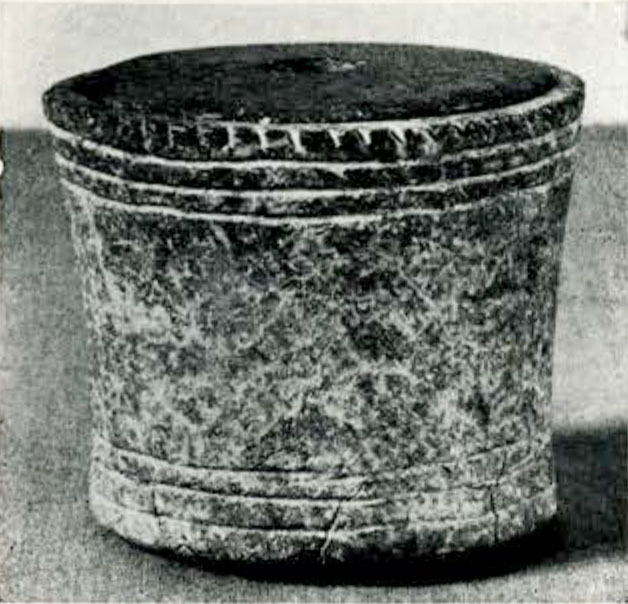
Image Numbers: 2447, 2448
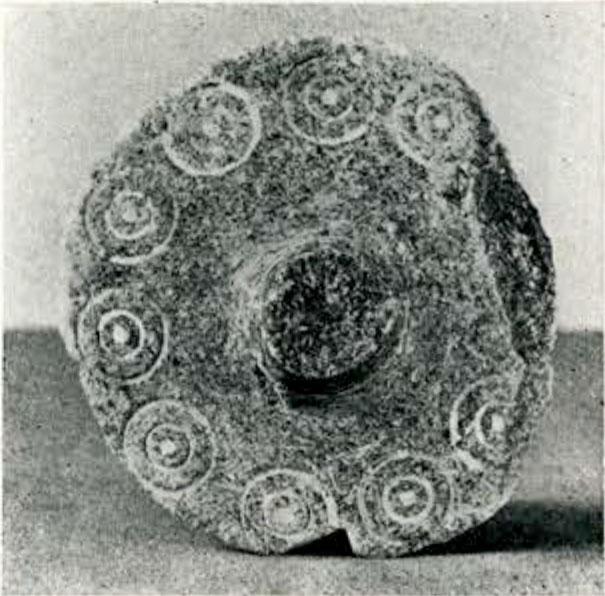
1 The Unpublished Objects from the Palaikastro Excarations, p. 96. ↪
2 Excavations at Phylakopi in Melos, p. 87; Troja und Ilion, i, p. 271, fig. 158; Arch. Eph., 1899. pl. 8, 11. ↪
3 Vaulted Tombs of the Messara, p. 94 and pl. L, no. 6900; ibid, pls. XVIII, 4195 and 4196; Hall, E.H., Excavations in Eastern Crete, Sphoungaras, p. 47, fig. 21, G; Evans, A. I., The Palace of Minos, vol. 1, p_ 166, fig. 188G, 3. ↪
4 Blegen, C. W., Zygouries, pp. 47, 78, 79, 80, 87ff, ↪
5 Seager, R. B., Excavations in Mochlos, p. 21, fig. 5, and Evans, A. 3., op. cit., p. 93. ↪
6 Woolley, C. L., Antiquaries Journal, 1928, vol. viii, No. 4, p. 444 and pl. lvii, 1. ↪
7 Studien zur ältesten griechischen Kunst, pp. 34-59. ↪
8 The Unpublished Objects from the Palaikastro Excavations, p. 94 and figs. 79 and 85 C. ↪
9 Cf. also Gournia, pl. x, 5 and 40. ↪
10 Hall, E.H., Vrokastro, p. 168, fig. 102. ↪
11 B.S.A., 29, pp. 224ff. ↪
12 Fimmem, D., Die kretische-mykenische Kulture, p. 165, fig. 163. ↪

